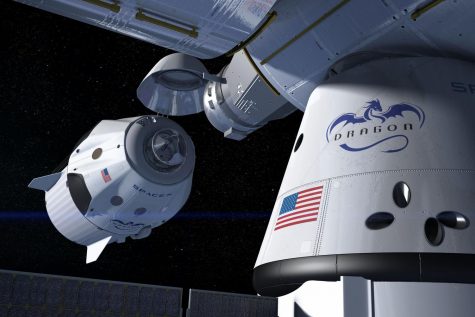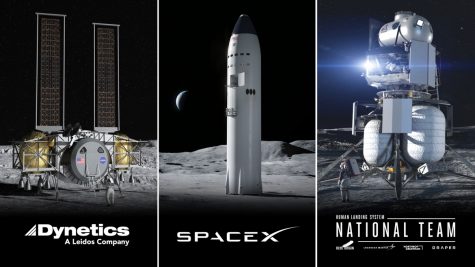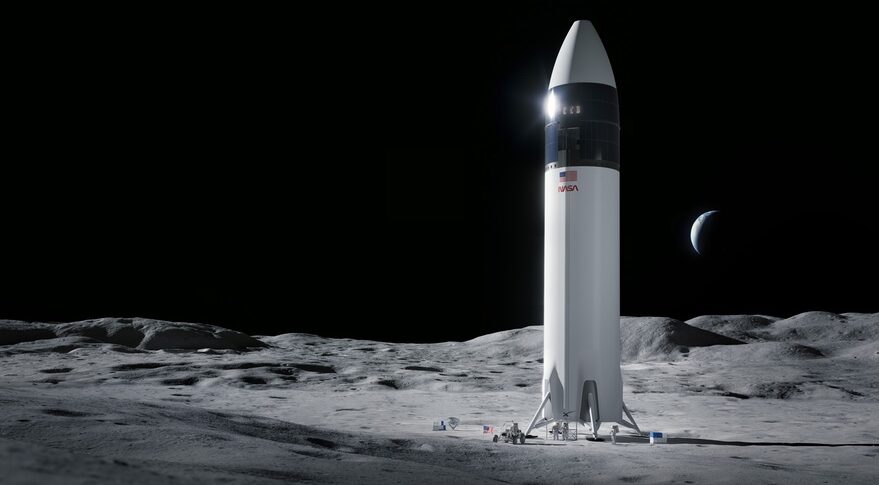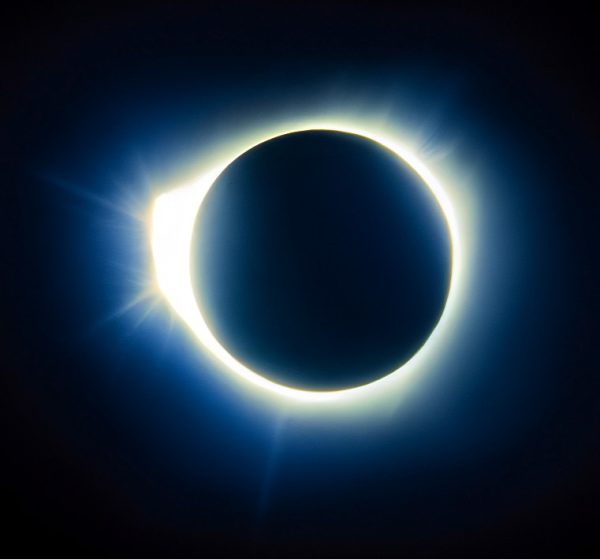NASA’s Next Human Moon Lander
In a previous article from the Parks Panther Press “Revisiting the Moon“, the plans for NASA’s Artemis Program were explained. To put it briefly, There are 3 Artemis Missions planned over the next few years. The article listed above stated that “Artemis 1 (Uncrewed) being launched in Late 2021, Artemis 2 (Crewed, but no Lunar Landing) being launched between 2022-2023, and Artemis 3 (Lunar Landing) being launched in 2024”. Artemis Missions will be launched by the Space Launch System rocket or SLS. These missions will only be able to send an Orion Crew Capsule on a path to the moon. The question remains, how would humans reach the lunar surface? What landers will NASA be relying on for that 2024 Lunar Landing? Well, on April 16th, 2021, the lander was finally revealed.
In recent years, NASA has been partnering with several commercial companies to complete tasks that they used to perform. These services included resupplying science experiments, food, water, and other cargo to the International Space Station (ISS) under the Commercial Resupply Services contracts. More recently, they are sending humans to the ISS under the Commercial Crew Program. These programs have been excellent choices for NASA, and are estimated to have saved the government agency billions of dollars (The Verge) compared to alternative methods. These contracts not only help NASA save money but also economically benefit the companies performing these services. The vehicles performing these missions are owned by a private company. Therefore, other governments and other private companies can purchase cargo or crew missions on these spacecraft for their own space stations and projects.

These contracts have worked out so well, that NASA decided to do it again for a lunar lander. Back in April of 2020, NASA announced 3 companies that had been selected to begin the development of their lunar landers. These 3 companies were Dynetics, SpaceX (founded by Elon Musk), and Blue Origin (founded by Jeff Bezos)/ National Team. Each of these teams offered different approaches to the problems of landing on the moon. For example, when landing on the moon, a spacecraft’s engine exhaust can strike the surface of the moon, shooting lunar dust back at the spacecraft. Blue Origin and Dynetics solved this problem with extra shielding on the bottom of the lander. However, SpaceX solved this problem by adding extra engines halfway up the vehicle. During the final stages of landing, these engines will take over to avoid kicking up lunar dust. Below is an image that is not to scale, showing concept renderings for each lander.

Over the past year, these companies have refined their designs to improve their chances of being selected. Finally, on April 16th, 2021, nearly a year after the original announcement, a winner was finally announced. SpaceX was going to win the contract with a lunar lander called Starship. This lunar lander will require in-orbit refueling to reach the moon and will need to prove its reliability with test flights to prove that it is safe to carry humans to the lunar surface. The lander will be launched into orbit exclusively by SpaceX’s upcoming Superheavy Booster, and the lunar lander will support two astronauts on the surface of the moon for a week. The contract is valued at $2.89 billion dollars, which does sound expensive but was apparently a lot less expensive than the bids from the other lander proposals. NASA was originally expected to select two lunar landers to land humans on the moon, but they were forced to cut this down to one when Congress didn’t give them the budget that they requested.
This was a massive step forward for the Artemis Program. With a lander design finally being selected, and several other Artemis components currently undergoing major testing, it seems like all of the puzzle pieces are coming together for a 2024 lunar landing.
If you would like to learn more about this subject, you can read NASA’s Blog Post about the lunar lander selection here.

Aiden is a 14-year-old 8th grader at Parks Jr. High. Like many people, he spends a lot of time online and playing video games. His favorite video game...











